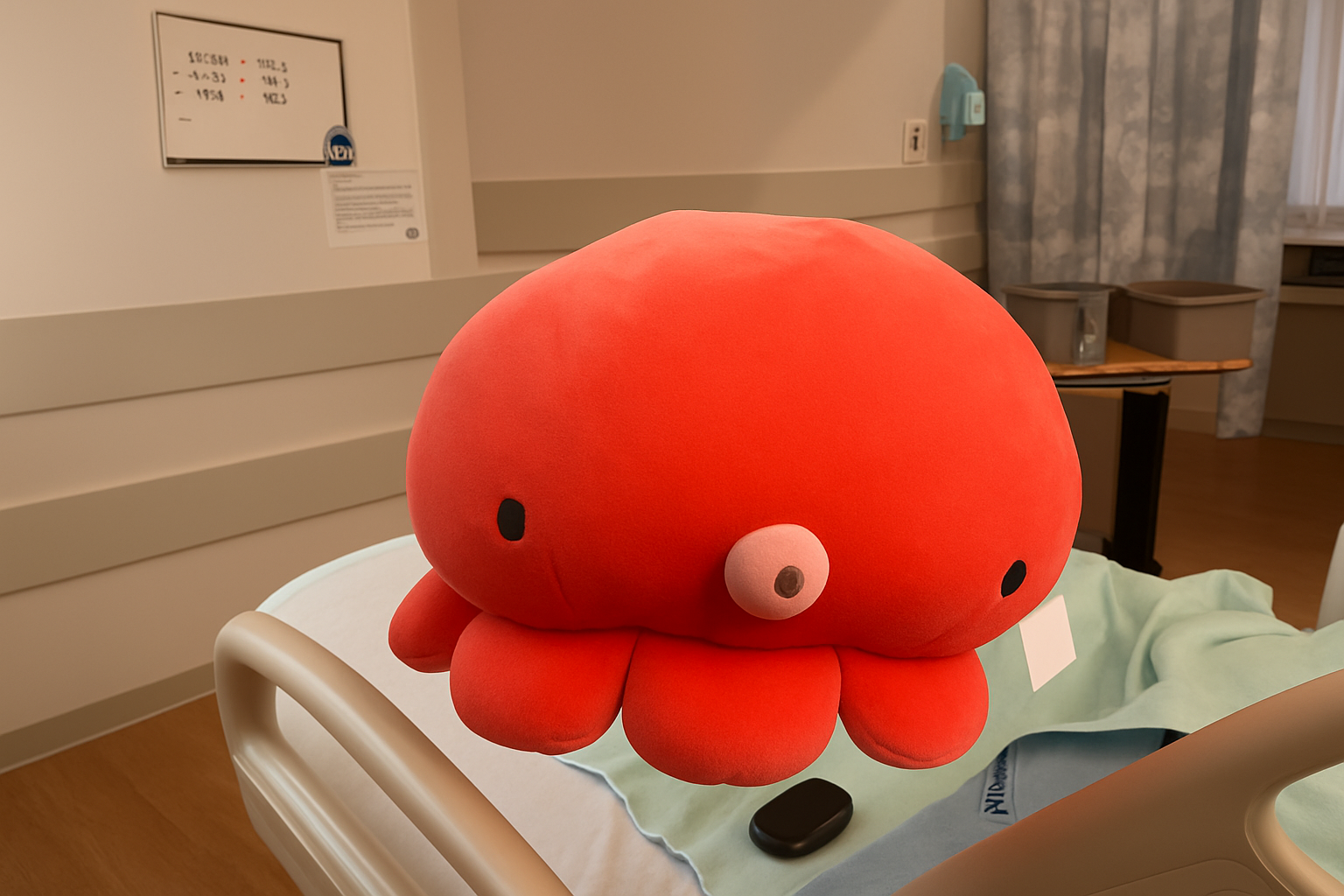
In the middle of my second semester at school, I reached a point where I knew something had to change for the sake of both my physical and mental health.
Fibroids run in my family, and I’ve had multiple fibroids for nearly a decade, but I didn’t think too much of it at first. My mom and I had asymptomatic fibroids, and since they are non-cancerous tumors and can shrink down during menopause, I wasn’t overly concerned and wanted to wait till my estrogen plummets without surgery. My menstrual cycles had always been mild, with no cramping, so I counted myself lucky—until things started to shift in 2023.
My Symptoms
Abnormal Heavy Bleeding
Late in 2023, I experienced my first abnormal, heavy bleeding—and it really scared me. I brushed it off as a one-time thing, but the abnormal bleeding started to become more frequent, and each cycle got longer and heavier in 2024.
Borderline Low Blood Count
After a few cycles like that, my OB-GYN ordered blood work. Luckily, my red blood cell count was borderline low, and there was no immediate action required other than taking iron supplements during my period.
Still, the quality of life had been dragged down in the shadow of fibroids, which made a negative impact on my mental and emotional health as well. I was constantly worried about leaking through clothes at work or bedding at night. I made sure to carry a full supply of pads and tampons in my bad at all times. There were days I felt dizzy, drained, and emotionally off-balance. It all began to weigh on me—physically, mentally, and emotionally.
Rapid Growth
In 2025, I noticed my pants were fitting quite right. It wasn’t just weight gain—my lower abdomen looked visibly larger, and I could actually feel firm, rounded lumps beneath my belly. My OB-GYN had been monitoring the largest fibroid for years, and recent scans showed it had grown by 50% every six months over the past year and a half.
─── ・ 。゚☆: *.☽ .* :☆゚. ───
I want to share the treatment options I explored—not as medical advice, but in the hope that it might help someone else going through something similar feel a little more informed, a little less alone. Please consult your own physician before making any medical decisions.
─── ・ 。゚☆: *.☽ .* :☆゚. ───
Exploring Treatment Options
Uterine Fibroids Embolization (UFE)
UFE is a non-surgical procedure that works by blocking blood flow to the fibroids, causing them to shrink over time.
Pros: Minimally invasive, with a relatively quick recovery (1-2 weeks).
Cons: The results aren’t immediate—it usually takes 3 months for shrinkage, but in some case, it can take up to 4 years. Reference about Uterine Fibroids Embolization
Why I didn’t choose UFE: I was ready for a more immediate change. Not knowing exactly when the fibroids would shrink wasn’t the right fit for me at this point in my life.
Myomectomy: Surgically Removing Fibroids
Myomectomy is a surgical procedure to remove uterine fibroids while preserving the uterus. Depending on size, location, and number of the fibroids, the procedure can be done in several ways: hysteroscopic, laparoscopic, robotic-assisted, and open abdominal. See more about types of myomectomy.
My largest fibroid was about 6 cm—large, but still manageable through small incisions rather than open surgery. That felt like a win to me. I wanted to avoid an open myomectomy if I could, both for the sake of recovery time and to minimize scarring.
Thankfully, my surgeon specializes in robotic-assisted procedures and came highly recommended across multiple platforms on US News Health, Web MD, and Healthline. We agreed on a robotic-assisted myomectomy, which would involve four keyhole incisions for the robotic arms and one incision to remove the fibroids.
Importantly, my surgeon does not use a power morcellator—a device that can potentially spread undiagnosed cancerous tissue. See more about the FDA-issued morcellator guidance.
Or Simply Wait and Monitor?
Before making a final decision, there was a moment where I was contemplating between continuing to monitor the fibroids and taking actions. But another cycle of abnormal bleeding pushed me to take action. I knew it was time.
The Surgery
The morning of surgery, I was strangely excited to evict these uninvited guests from my body. But once I lay down on the operating table, surrounded by nurses and physicians, a sudden wave of fear came over me. And then—darkness.
The next thing I remember: the cool touch of iced water on my lips and the citrus scent of lip balm. I was in the recovery room. The nurse told me the surgery went well, and it brought a happy tear with relief.
Later, the doctor told me the surgery took three hours—longer than expected due to the size and number of fibroids. They focused on removing the largest and most strategically placed ones. I still have smaller fibroids remaining, which may grow in the future, but for now, the major ones were gone.
Recovery
The first night was tough. I lost 800 ml of blood during surgery, and since I naturally have low blood pressure, I felt extremely faint the first time I got up from the restroom. I thought I was passing out. Thankfully, my nurse handled it like a pro, holding me with a safety belt loosely hung around my body, calling other nurses for help and moving me to the bed. It was pretty scary.
Other than that, the recovery was smooth.
Luckily, I had no nausea from the general anesthesia. I was able to eat dinner that night without any issues.
For pain around the incisions, I only needed ibuprofen for four days. Each day, the pain lessened and was manageable without pain medications. The gas pain from the laparoscopy was also tolerable—I think walking might have helped a lot.
I took stool softener on the first 2 days, and by day 2, my digestion started working again.
I’m now three weeks post-ops. The incisions are healing well. All wounds have closed completely, the four small ones are fading, and the 4 cm incision still has a bit of light brown mark from the initial bleeding. The skin looks healthy, with no signs of infection. I’ve been using a scar cream and silicone sheets as part of my healing routine.
Closing: Interest in Women’s Health
This journey has taught me so much about listening to my body, trusting my instincts, and advocating for my health. If you’re navigating something similar, I hope my story offers reassurance and a reminder: you’re not alone.
Resources
- The Fibroids subreddit is a safe and supportive online community of strong and empowering 19K members where you can visit to vent, ask questions, seek advice on anything related to fibroids, and hopefully and ultimately, share your success stories. Personally, this community was a huge supporter for me as to planning my surgery, especially on what questions to ask to surgeon before surgery, how to prepare the surgery, and get an idea of what the recovery would like.
- Choosing a right physician who your instincts say “yes, I can trust this doctor” to can be a redundant and challenging process. For me, reading patient’s reviews of doctors was significantly helpful to calm my nervous system on US News Health, WebMD, and Healthline.
- For those having an HMO insurance plan, receiving care from in-network providers is a wise way to go to save $$$$ or more. I often noticed doctor’s in-network info on the websites of insurance companies, medical groups, and even hospitals was outdated. A rule of thumb to verify the up-to-date info is to give them a call. Furthermore, I’d highly recommend asking medical providers to get a pre-authorization from your insurance company, to avoid any possibility of scaring you with high medical bills.
Product recommendations for recovery:
- A cute octopus pillow was very helpful to cover and protect my belly while wearing a seat belt in cars for the first 2 weeks. | Link in Amazon
- I used a U-shaped pregnancy pillow when sleeping elevated for the first 2 weeks whenever my body needed. Besides sleeping, I loved being snuggled in the soft pillow to get comfy and cozy. | Link in Amazon
- I used wedge pillows to support my back when sitting on the bed for reading and using a laptop. | Link in Amazon
- I worn long boxy t-shirts for a few weeks at home. Very comfy!
- Wearing disposable underwear was a good choice as many Fibroids people in Reddit recommended. I had 1 big submucosal removed so the bleeding and spotting lasted for about a week. | Link in Amazon
- My go-to menstrual pads is Rael’s organic cotton pads. No chlorine, no fragrance. On top of that, its absorption is amazing! | Rael Website | Link in Amazon
- For scar management, I applied Madera’s scar cream once a day, especially after taking a shower. | Link in Target
- Also, I sometimes used ScarAway’s scar gel sheet to hydrate the incisions. | Link in Target
